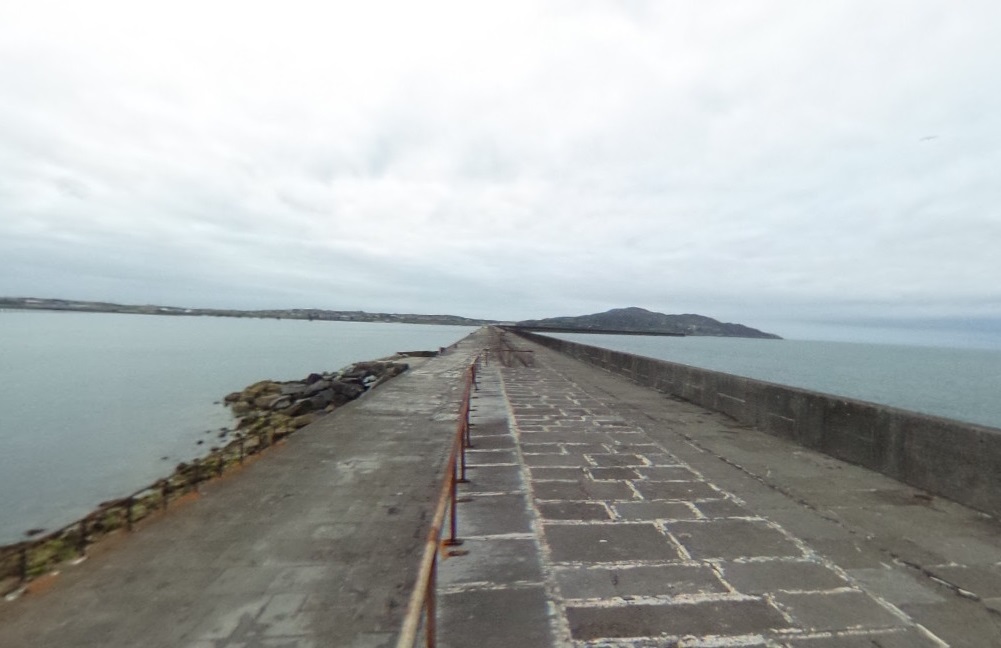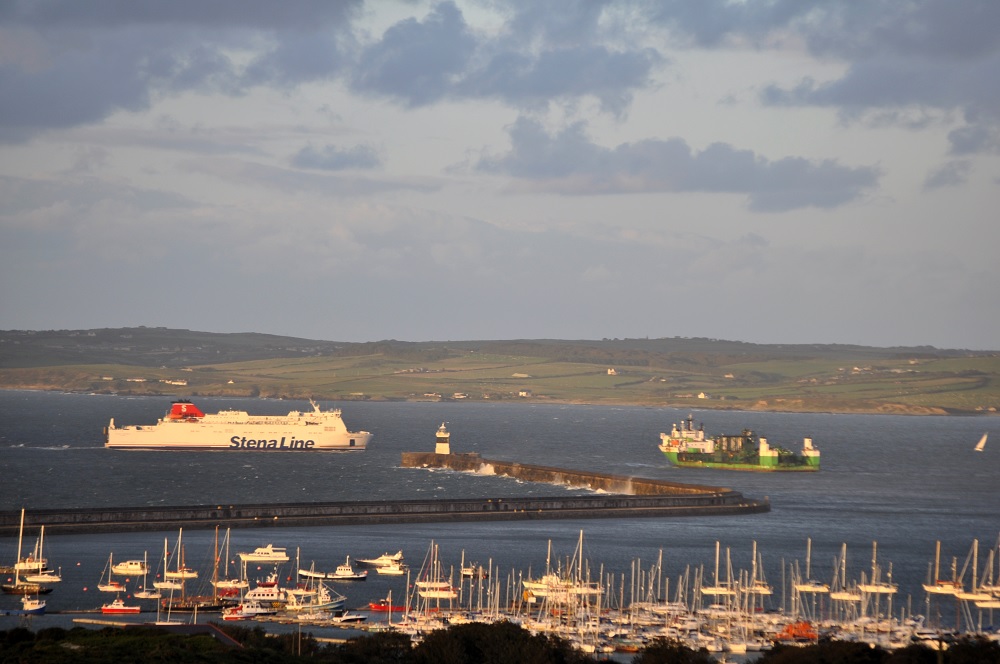Plans submitted to repair breakwater protecting town and port from disaster

Gareth Williams, local democracy reporter
Plans have been revealed for major repair works to Europe’s longest breakwater, which includes changing its appearance to ensure it continues to protect a major port town.
The port and town of Holyhead are shielded from the elements by the 1.7 mile 19th century Grade II listed structure, with the rubble used to form its foundations coming from the northern side of Mynydd Tŵr (Holyhead Mountain).
But according to developers, the current maintenance regime is “unsustainable” and “no longer matches the rate of erosion to its foundations,” warning that only such a scheme would provide a long term solution and prevent the risk of breaches over the next 15 years.
As a result, Stena Line Ports Ltd has now submitted a Listed Building Consent application to carry out the work to secure the breakwater for the foreseeable future.
“Since its completion in 1873, the rubble mound has gradually been eroded by wave action increasing the wave impacts on the superstructure,” notes the supporting statement.
“Without maintenance, the loss of the rubble mound would eventually result in the superstructure being undermined and breaches in the Breakwater forming, which would expand along the length of the Breakwater culminating in total failure.”
‘Closure’
Widely regarded as an engineering marvel of the time, it took more than 1,300 workers 28 years to complete the breakwater when it was first commissioned following the 1847 Act of Parliament.
In recent years, its owner Stena Line Ports have been carrying out the day-to-day maintenance on the structure, with a 2013 estimate revealing that it was costing the company an average of £150,000 a year.
A previous pre-application report warned that while the port providing shelter from a more extreme wave climate to the berthing ferries and other vessels, any failure would “likely lead wave conditions to increase to the point that the operation of the ferries is no longer viable, resulting in the closure of the port and the loss of the international link to Ireland for Wales and England.”
In 2017, with Welsh Government and Stena Line Ports support, a business case developed options for the refurbishment of the breakwater.
These varied from doing nothing, which would result in the failure of the breakwater, to strengthening the existing structure, constructing an offshore breakwater and restoring or topping up the rubble mound.
The proposed refurbishment scheme is being jointly developed by Stena Line, Anglesey Council and the Welsh Government but the actual works to the breakwater would be led by Stena Line.
The application went on to state, “This maintenance regime has become increasingly expensive and is no longer matching the rate of erosion of the rubble mound; therefore, a more viable long-term solution to ensure the stability of the Breakwater is required.
“A permanent solution to the constant erosion of the foundations of the Breakwater and damage of the blockwork-walled superstructure itself is required before the next breach occurs.”

Consultation
Proposed within the scheme is:
- Seaward side – installation of concrete armour onto the existing rubble mound along the length of the Breakwater (18.1m3 Tetrapod units and reinforcing 120-tonne Z-shaped units);
- Breakwater roundhead – rock placement to widen the existing rubble mound, with installation of Tetrapod units and reinforcing Z-shaped blocks; and,
- Leeward side – installation of an Articulated Concrete Block Mattress (ACBM) and rock.
If completed in one phase, the work would be expected to take two years to complete.
The Design and Access attached to the application stated: “On the seaside, the Breakwater would be protected with a minimum 30m width of 18.1m3 Tetrapods.
“These Tetrapods would be placed up against the existing superstructure to provide support to the wall. The toe of the Tetrapods would be secured with one row of 120t Z-blocks.
“At the roundhead, a low-level rock berm would be introduced to form a base for the concrete units. The leeside would be a mixture of articulated concrete block mattress units and a rock revetment.”
It’s expected that Anglesey Council will consider the application over the coming months following a public consultation and consulting the views of agencies and statutory bodies including Holyhead Town Council.
Support our Nation today
For the price of a cup of coffee a month you can help us create an independent, not-for-profit, national news service for the people of Wales, by the people of Wales.





